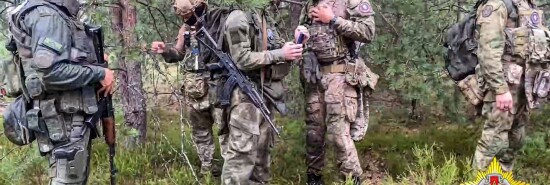
Why NATO is strengthening its forces along the Polish and Romanian borders
Tom Rogan
Video Embed
Polish and Romanian forces are strengthening the defense of their eastern borders.
Poland’s concern is the threat posed by groupings of Belorussian forces and Wagner Group mercenaries along its southern and central border. Indicating a desire to intimidate Poland while testing NATO’s resolve, two Belorussian helicopters temporarily entered Polish airspace this week. That intrusion embarrassed the Polish government and alarmed residents of border towns. The United States and Poland are now regularly flying signals and ground radar surveillance aircraft designed to identify military formations in Belarus and establish their capabilities and intentions.
WHY DOES UKRAINE KEEP BEING RUDE OVER FOREIGN AID?
Romania’s concern is focused on the Russian drone strikes that are targeting Ukrainian grain depots on the Danube River. A strike against the Izmail depot destroyed 40,000 tonnes of grain on Wednesday. This attack just a few kilometers from Romania follows similar incidents last week.
NATO’s worry is not that Wagner and Belorussian forces might launch a full-scale invasion of Poland. The Polish armed forces are well-trained and equipped. They are supported by the U.S. Army’s V Corps; providing an artillery brigade, mechanized infantry regiment, and aviation combat brigade (including three Apache gunship companies). The U.S. Army also has a 101st Airborne Division brigade and elements of the 10th Mountain Division deployed in eastern Europe. This gives Poland a potent array of air-ground combat power that would annihilate any massed enemy formation. And even if Vladimir Putin doesn’t care about Wagner, Belorussian leader Alexander Lukashenko and Wagner chief Yevgeny Prigozhin are not suicidal idiots (even if Prigozhin is playing a dangerous game with the Kremlin)
Instead, the alliance fears that Russia is increasingly tempted to test NATO’s appetite for deniable escalation. That is why U.S. Ambassador to the United Nations Linda Thomas-Greenfield recently declared, “Any attack by the Wagner Group will be seen as an attack by the Russian government.” The intent: Make Moscow understand it will not be able to get away with attacking NATO with the excuse, “It was Wagner, not us!” Such a Russian test might come via a Wagner/Belorussian skirmish with Polish border guards.
CLICK HERE TO READ MORE FROM THE WASHINGTON EXAMINER
With Romania, the threat is that of a drone strike on Romanian territory that Russia later claims was the product of a targeting error. In response, the U.S. is operating maritime surveillance aircraft over Romania, monitoring Russian fleet movements in the Black Sea (though the Biden administration’s risk aversion has meant these aircraft are not flying in the most optimal areas).
The question? Whether these forces will be sufficient to deter Putin from pursuing even tentative NATO-facing escalation. As Russia’s war effort in Ukraine continues to oscillate between defeat and quagmire, Putin’s desire to undermine NATO unity will grow.
